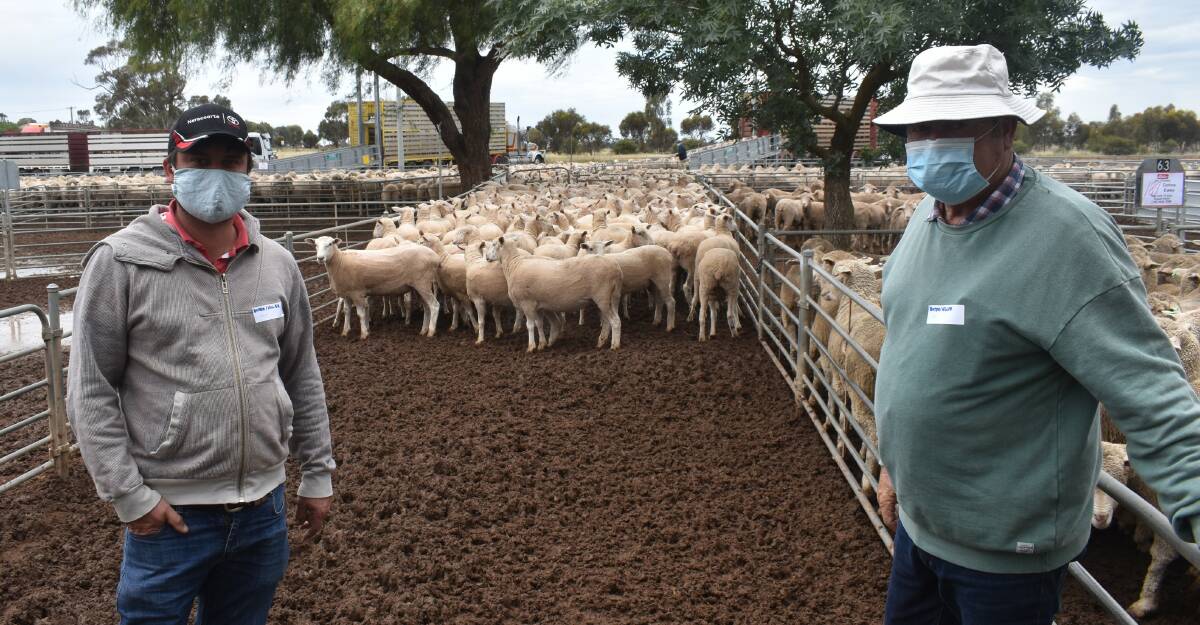
Prime lamb production is carefully integrated with cropping at this Wimmera farming operation.
Subscribe now for unlimited access.
or signup to continue reading
Craig Rich with his brother Stephen and father Bill, run 6000 Border Leicester-Merino first-cross ewes with a major cropping enterprise across three properties near Goroke and Kaniva.
The lamb operation and cropping enterprises work in together with ewes running on paddocks of clover and ryegrass and lambed down onto pure paddocks of clover sown as part of the cropping program.
"Instead of making hay we run sheep on those paddocks," he said.
IN OTHER NEWS:
The Richs aim to turn off lambs at 28 to 29 kilograms with as many "straight off mum" as possible.
"We aim to have two thirds of the drop off by Christmas and the remainder get shorn and then go onto bean stubbles," Mr Rich said.
The ewes are joined in three joinings with the rams going out in the last week of November and the second lot between Christmas and new year and the third lot were empty ewes given a last chance.
"We don't want any lambs being born after September," he said.
"We're pretty much selling lambs from the last week of September to the end of May."
Mr Rich said the ewes were scanned and then rescanned.
The cropping program comprises canola, wheat, beans and barley.
The ewes run on the canola and wheat stubbles before lambing.
Mr Rich said they had marketed about 1000 to the end of October.
"November and December are big months for offloading," he said.
He said the majority were sold over the hooks but if the physical market was running in excess of the grid price they will send lambs that way.
"This year we have sent loads to Horsham, just to capture the spike in the market,." he said.
"We have a bit of a plan but we don't commit ourselves down to the last sheep."
Mr Rich said prices for lambs needed to be about 700 cents a kilogram to make justify paying up to $408 for first cross ewes.
The family bought around 460 ewes at Wycheproof.
He said they had been also buying scanned-in-lamb ewes on AuctionsPlus in May/June when the season looked good.
"We use AuctionsPlus a fair bit for buying ewes," he said.
"All bought-in sheep are foot bathed and then quarantined separately for as long as possible."
Mr Rich said the older ewes were joined to Poll Dorsets and the young sheep to White Suffolks.
He said it had always been the way with the maidens, but was now about half and half.
Both breeds produce good lambs - "it's more feed related than genetics - green grass does the work and that's what we focus on", he said.
The Dorsets were sourced from the nearby Janmac stud, where his grandfather was among the first to purchase rams. The White Suffolks were from the Omad and Marleigh studs.
The Richs retain a drought reserve of about 500 tonnes of barley and hay. If not used the barley is sold and replaced the following harvest.
Did you know you can receive updates straight to your inbox? To make sure you're up-to-date with news from across the region, sign up below.
If you are seeing this message you are a loyal digital subscriber to the Wimmera Mail-Times, as we made this story available only to subscribers. Thank you very much for your support and allowing us to continue telling the Wimmera's story. We appreciate your support of local journalism.

